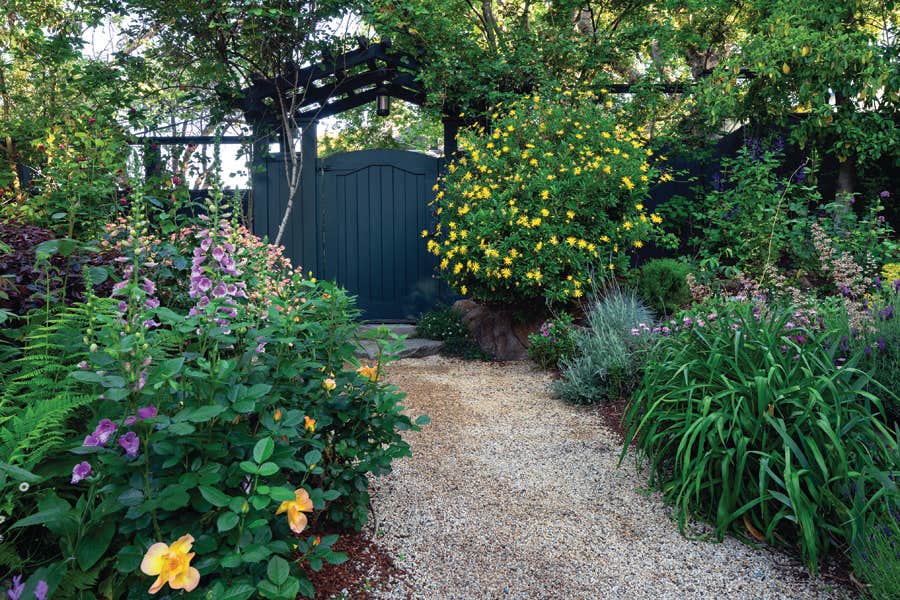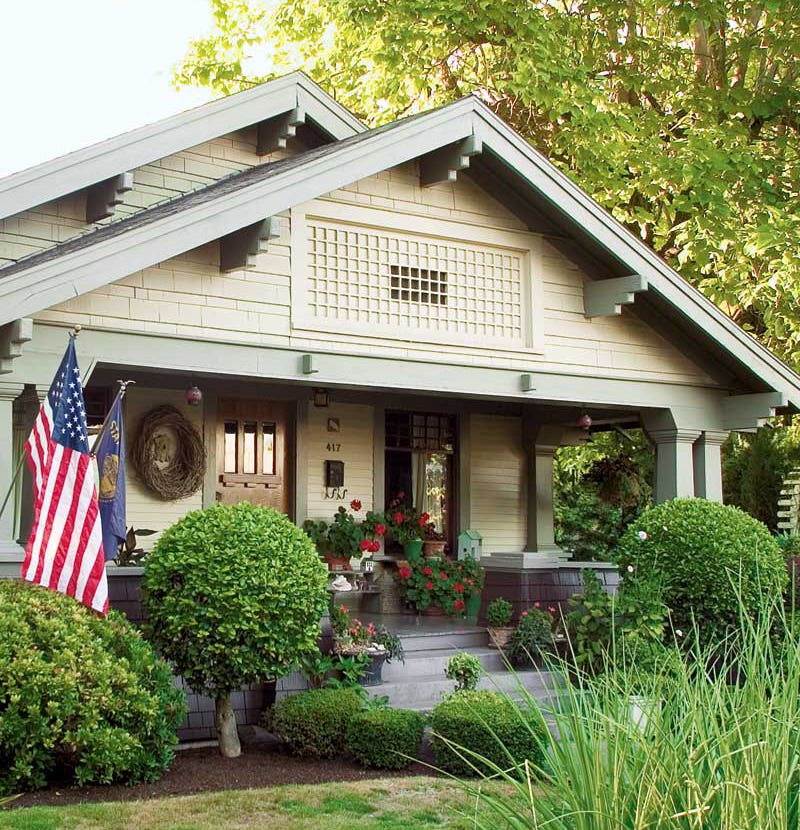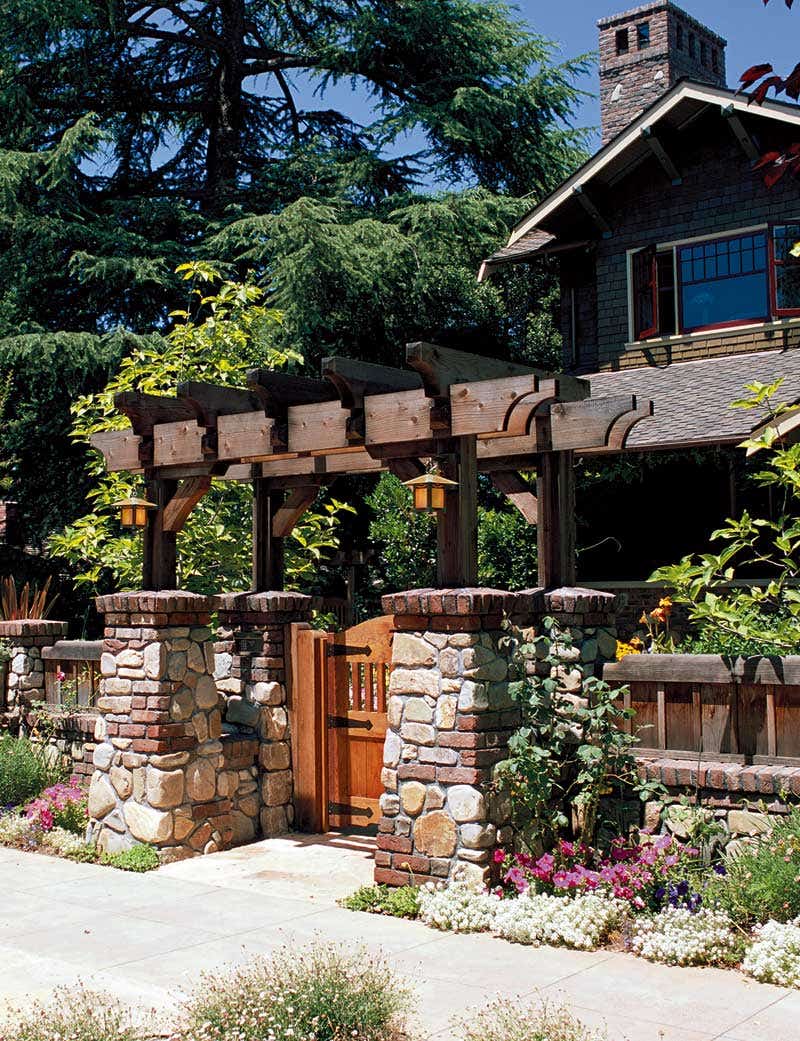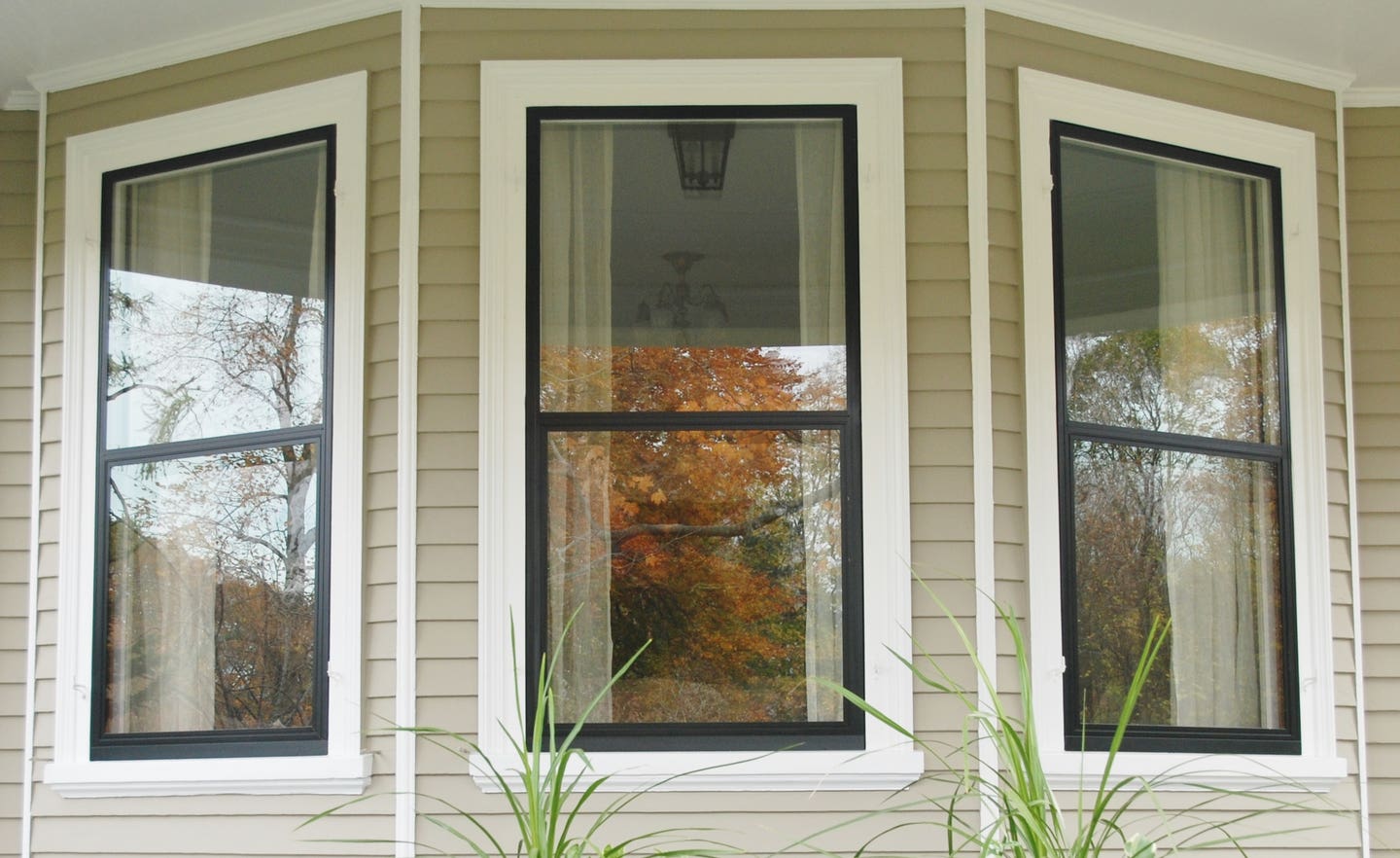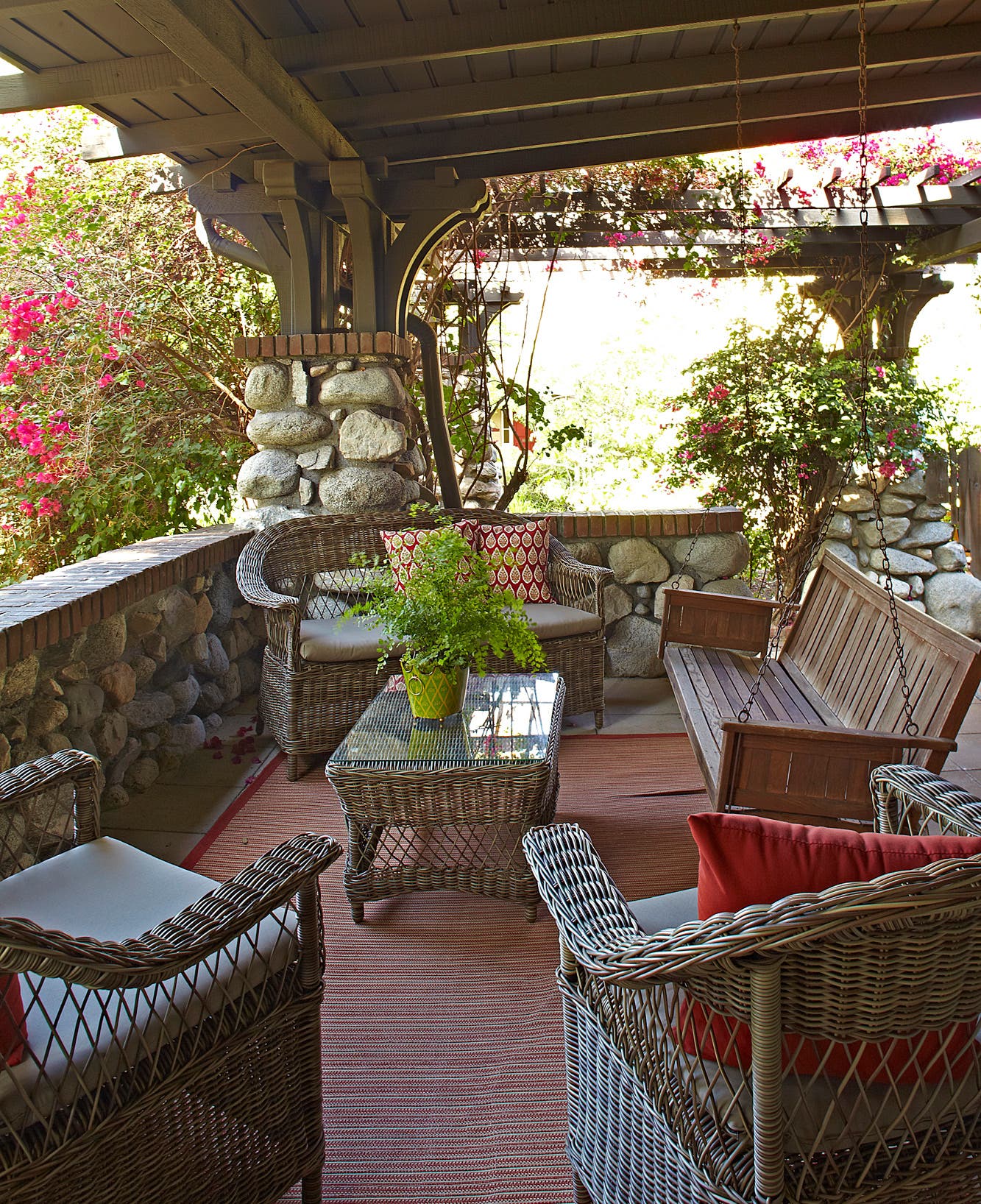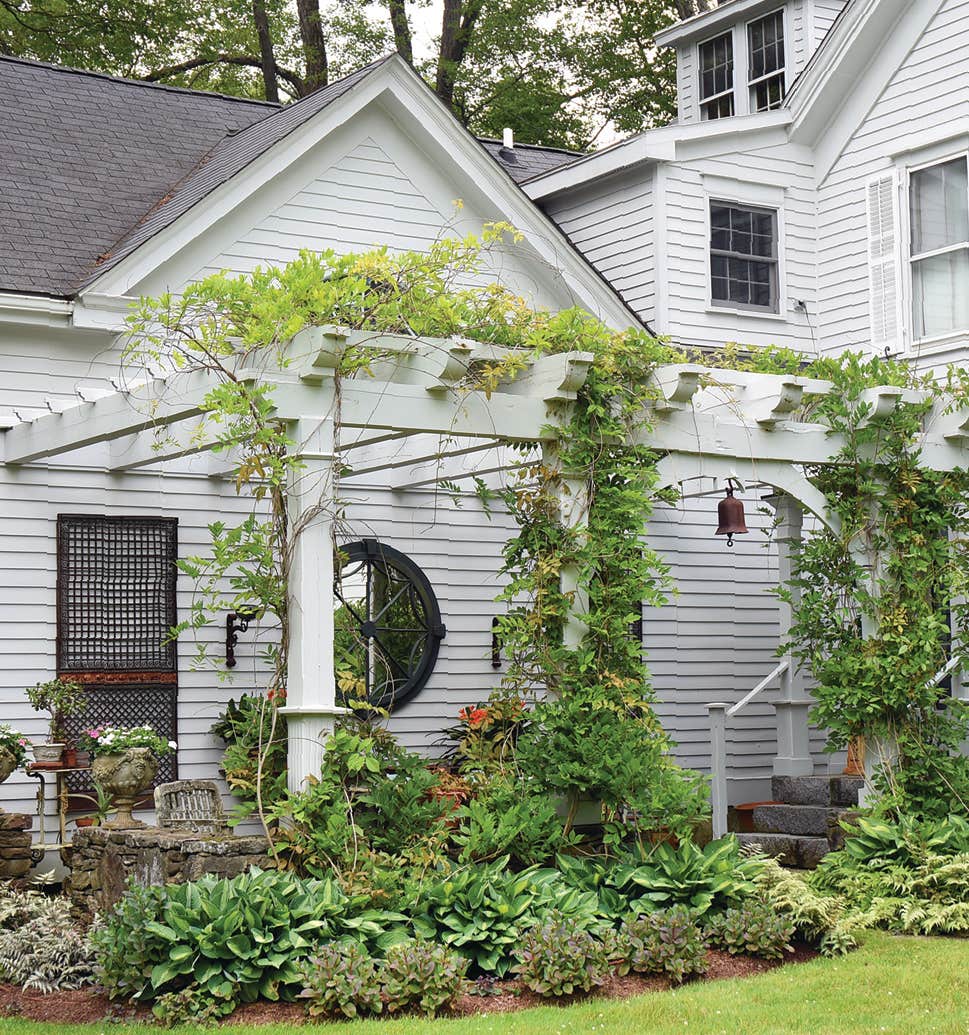Visiting Mara’s Arts & Crafts Garden
In the autumn, the glowing colors and strong geometry of an Arts & Crafts garden come into their own, accented by compatible containers.
She already had collected Mission furniture, so it seemed that finding a simpatico house was the obvious next step when Mara Seibert’s family needed more space. They were feeling cramped in their center-hall Colonial—and the furnishings Mara had purchased since the 1980s felt uncomfortable in that previous home. Mara veered into Arts & Crafts garden style.
A planned community designed by Stewart Hartshorn in the late 19th century—targeted for residents who shared an appreciation of nature—Short Hills, New Jersey, is built around winding roads and mature trees. Here, Mara found the Albro and Lindeberg house of her dreams, one of five examples of the work of these prominent New York-based architects in the town. The house was built in 1907, when the firm was at its zenith. (That also marks the beginning of the chestnut blight, which might explain the preponderance of chestnut used in the woodwork.) For the façade, stone was quarried from the pond that’s within view.
When Mara and her family moved in, the backyard of the one-and-a-half-acre landscape was divided into three distinct areas—and it felt choppy and uninviting. Mara wanted a more unified, park-like ambiance…and she was ready to translate the Arts & Crafts theme into the great outdoors. At the same time, Mara was starting a business importing Italian terra cotta.
She couldn’t help noticing how perfectly the terra cotta married with the stonework of the house. She already knew Richard Hartlage of Land Morphology when outdoor renovation began eight years ago; the two were on the same page about what needed to be done. They expanded the cramped bluestone patio behind the house, adding a skirt of single-slab stone. That patio formed a showcase for many of Mara’s favorite terra cotta containers, with terra cotta window boxes (part of the first shipment from Impruneta) cradling herbs, and large round containers spilling with specimen tropicals. Together with John Danzer from Munder Skiles, she selected appropriate furniture—supersizing an outdoor sofa that she found in a Bridgehampton antique store and balancing the long space with twin dining tables. She’d previously staged a line of rolled-rim terra cotta pots holding hydrangeas behind the patio; because they are potted in the ultra-durable Impruneta containers, they stay outdoors throughout the year. The hydrangeas, though, were begging for larger containers.
Recognizing that the landscape cried out for “bold moves that would complement the architecture and not distract from it,” Hartlage worked with the nature-inspired mood of the Arts & Crafts movement. Rather than planting perennial borders featuring fussy individual plants, he employed hundreds (even thousands) of one variety of plant for grand sweeps. Not only is the result refreshingly bold and congruous with Arts & Crafts naturalism, but it also served his ulterior motive. “Large masses are easier to maintain on a large property,” he declares—and low maintenance was a priority. That was his rationale for planting a swath of ornamental grasses, Panicum virgatum ‘Rehbraun’ and Liriope spicata, beside a massive swath of blue-blossomed nepeta (catmint).
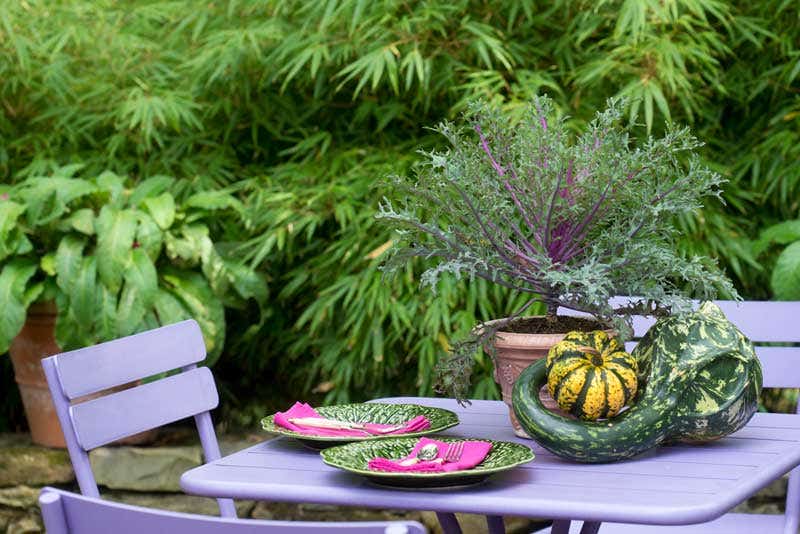
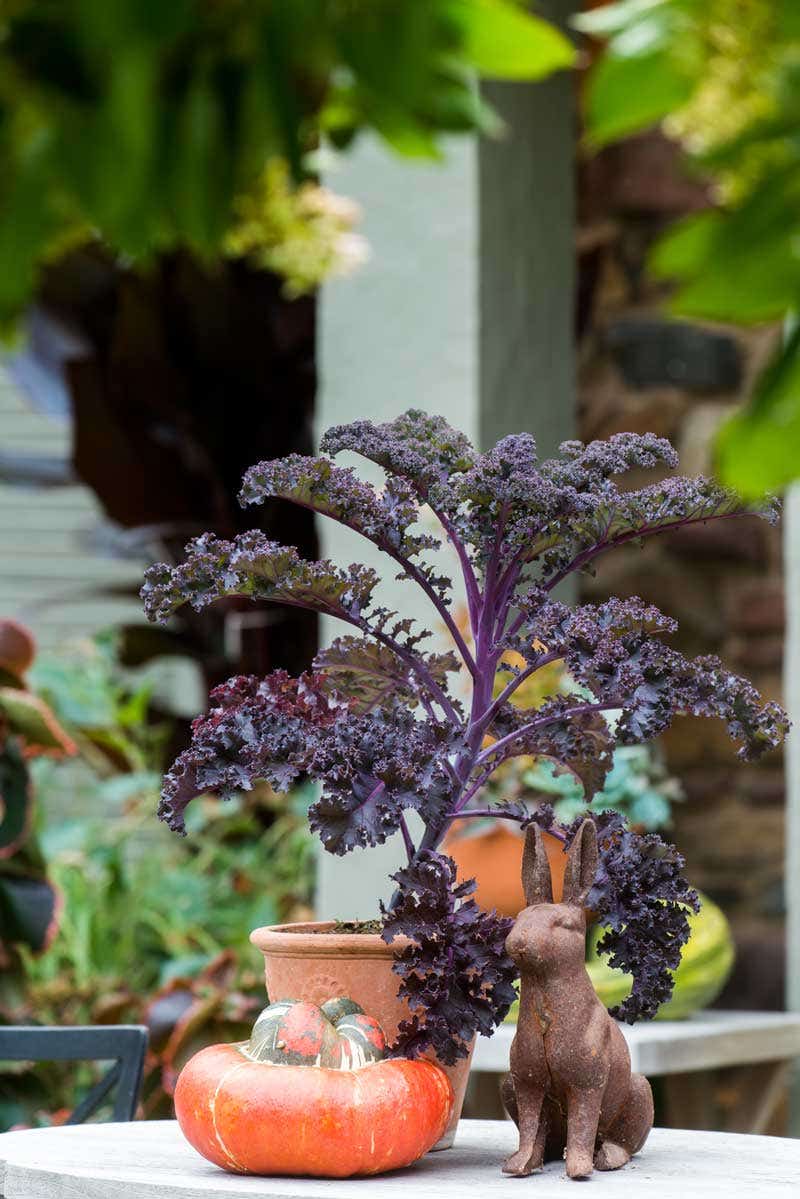
Because the pottery was an important element, part of the goal was to create opportunities to use Seibert & Rice containers as focal points. One sterling example is the side garden tucked behind a grove of hemlocks with a serpentine rickrack of boxwood running along pea stone on the way to a secluded dining terrace destination. Along the route, oil jugs form accents, beckoning onward. On either side of the boxwood, a thousand astilbes in three shades of pink burst into flower in waves during summer. By autumn, their flowers have faded, but the flaxen stalks remain. Taking up the rear are mahonia shrubs with shiny, dark green, perennially tidy foliage. Seibert had glass panels cut to fit the top of the terra cotta jugs, which turns them into bistro tables.
The tropical plants Seibert uses in her containers grow lush as the season ripens, reaching a crescendo in fall. Their vibrant colors echo the autumn hues as dogwoods and other trees change color near her Arts & Crafts garden. Mara tosses accent chrysanthemums into containers as exclamation points—and everyone lingers outdoors.
Garden Evolution, and the birth of Seibert & Rice
In the midst of this project, Mara Seibert left Wall Street to start a business with a friend—and that endeavor had everything to do with her home garden. Seibert & Rice was born when Mara and Lenore Rice rented a vacation house together with their families in Impruneta, Italy, and found that the region was famed for producing “the most beautiful and durable pottery in the world,” Seibert recalls. The local clay has such a high iron content that pottery from the region can be fired for a week at 2,000 degrees F—making it particularly sturdy.
Initially, craftsmen were hesitant to sell to the two eager housewives from New Jersey, but they were persuaded to prepare a shipment. For their part, the two Jersey girls feared that the shipment of their coveted terra cotta might never arrive at its destination. “A month later, a truck pulled up with this wonderful pottery,” Seibert recalls. That nobody else had ventured to import the Impruneta terra cotta was a lure, and the partners began designing as well as importing containers. What began with the basic desire to make a beautiful place more enchanting has now expanded into a company with a national presence.
In her constant, undying pursuit of all things garden-related, Tovah Martin gets her hands dirty both outside and indoors. She is a perennial, heirloom, vegetable and cottage gardener of fanatical proportions, and is accredited with NOFA as an Organic Land Care Professional.



